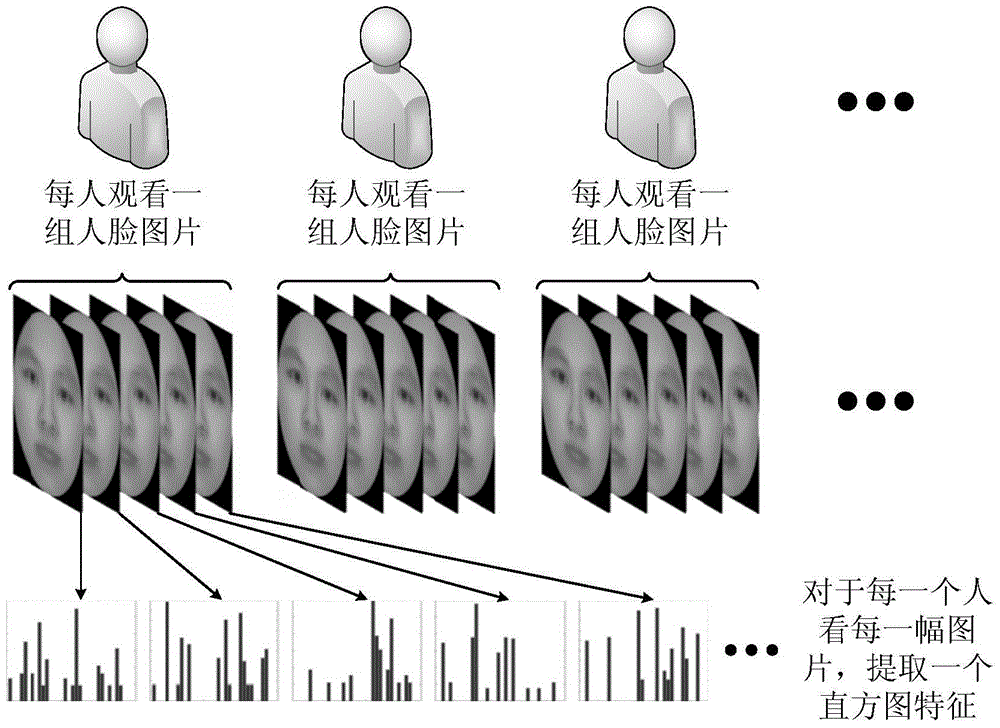Machine learning-based method for evaluating and predicting ASD
A machine learning and histogram technology, applied in the field of image processing, can solve the problems of no further prediction, no regional distinction, large region, etc.
- Summary
- Abstract
- Description
- Claims
- Application Information
AI Technical Summary
Problems solved by technology
Method used
Image
Examples
Embodiment
[0045] The program as a whole can be divided into four steps, which are collecting data, extracting features, training classifiers and making predictions.
[0046] like figure 1 Shown is a flow chart of the method for evaluating and predicting autism in the present invention, including the following steps:
[0047] Step 1, collect the eye movement data of the eyes of individuals with autism and normal individuals to scan the face.
[0048] Specifically, an eye tracker is used to display a face picture on the screen of the eye tracker, and the eye tracker will record the data of the face position that the participating experimenters are looking at, and obtain a coordinate corresponding to the image.
[0049] In this embodiment, TobiiT60 eye tracker is used, its sampling rate is 60Hz, and the screen resolution is 1024×768 pixels. A group of 700×500 pixel face pictures were displayed on the screen of the eye tracker, and the eye tracker automatically recorded the coordinates of t...
PUM
 Login to View More
Login to View More Abstract
Description
Claims
Application Information
 Login to View More
Login to View More - R&D
- Intellectual Property
- Life Sciences
- Materials
- Tech Scout
- Unparalleled Data Quality
- Higher Quality Content
- 60% Fewer Hallucinations
Browse by: Latest US Patents, China's latest patents, Technical Efficacy Thesaurus, Application Domain, Technology Topic, Popular Technical Reports.
© 2025 PatSnap. All rights reserved.Legal|Privacy policy|Modern Slavery Act Transparency Statement|Sitemap|About US| Contact US: help@patsnap.com



